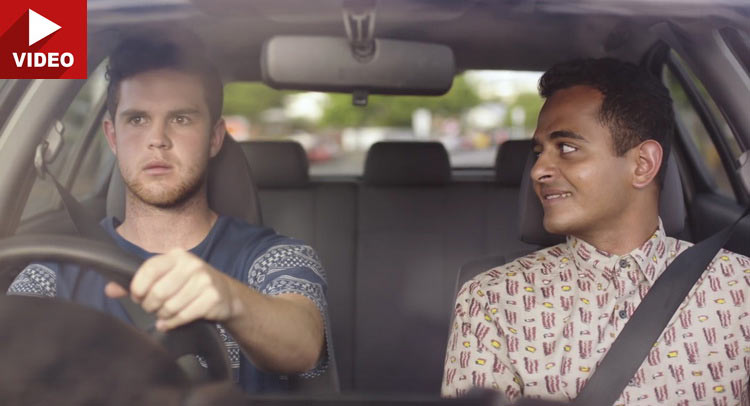If we’re being honest with ourselves, even when we’re behind the wheel, we should acknowledge the fact that our mobile phones are frequently captivating our attention.
You don’t even need to text somebody in order to get distracted while driving. All it takes is one glance at your screen in order to see what the alert you just received was all about and you could find yourself in serious on-the-road trouble.
This is why the New Zealand Transport Authority has launched ‘Hello’, which uses Lionel Ritchie’s classic song in order to provide viewers with an awkward and sometimes even creepy viewing experience.
In order to understand what we mean, you’ll have to watch people behind the wheel feel a rather personal touch from somebody they weren’t expecting, as they were reaching down to grab their phones.
The tagline is “Put me first. Drive phone free” and creative director Emily Beautrais explains to Adweek why we should use any and all deterrents when it comes to avoiding distractions behind the wheel.
“We’re never without our phones; it’s the first thing we look at when we wake up in the morning, and the last thing we look at before we go to sleep. We live in a time where the majority of young people say they ‘can’t function’ without their phones. Asking them to put it down at any time is a big ask.”
According to NZTA Senior education adviser Adrian Stephenson, research suggests that “driver distraction is likely to be a factor in 20-30 percent of crashes. However, the majority of young people still admit to using their phone for unnecessary tasks when they’re behind the wheel. While lots of overseas campaigns still use shock tactics, we realized we needed to take a different approach with young people if we had any hope of getting their attention.”
Since passengers do indeed feel uncomfortable when drivers use the phone (as more research suggests), this campaign makes that discomfort visible without anybody taking a blunt and judgmental tone.
“Hello” was launched in New Zealand on Sunday, across all online and social media networks. Later on, there will also be radio support so we’re quite curious how they’ll go about transmitting a sense of awkwardness in that manner alone.







